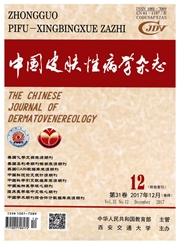

 中文摘要:
中文摘要:
目的探索改进细胞培养对泌尿生殖道沙眼衣原体I临床株检测的敏感性。方法培养McCoy细胞至孔板中,置于37℃,5%CO2温箱中孵育,18—24h后生长至致密单层后,接种沙眼衣原体标准株和临床株,培养48—72h后,用卢戈氏碘液染色鉴定培养结果,凡是培养阴性的标本继续传代培养至五代。为评估多次传代后培养法的敏感性,选用沙眼衣原体内源性质粒基因片段为引物,PCR扩增检测沙眼衣原体。结果428例样本经5次传代培养,共检测出149例沙眼衣原体阳性标本,阳性率为34.81%。以细胞培养共检出的149例阳性标本为基准:初次培养(原代)阳性仅24株,漏检率为83.89%;按常规的沙眼衣原体细胞培养判定标准盲传1次后(二代),阳性株虽增加至91株,漏检率仍有38.93%。传代2次后(三代),阳性株增加至145株,漏检率降至2.68%。PCR扩增检测除了35例培养法检测阴性而PCR法检测为阳性的标本外,余与细胞培养法完全一致。以PCR为参比,多次传代后的细胞培养敏感性达80.98%。结论增加传代次数培养可以提高细胞培养法的敏感性。
 英文摘要:
英文摘要:
Objective To improve the sensitivity of Chlamydia trachomatis cell cuhure. Methods After 18 - 24h, McCoy cell cultured monolayer in the six well trays at 37~C and in CO2 of 5% ,the standard strain and wild strain of Chlamydia trachomatis were inoculated and cultured for 48 - 72h. The existence of Chlamydia trachomatis was identified by Logus iodine dying which the culture-negative strains cultured from the five passages. PCR has been taken as a reference. Results We believed clinical sample was confirmed to be Chlamydia trachomatis negetive after second blind cell culture passage. But in our study , the detection rate of Chlamydia trachomatis can be significantly increased by culturing multiple passage, 149 positive samples were detected in 428 cases. The positive rate of the initial culture (primary generations) was 5.61%, the positive rate of the passaging once (two generations) was 21.26% ,38.93% patients were missed according to next 2 passaging ( 3th and 4th generations ) , which already get 145 positive samples. We used PCR as control ,found the sensitivity of our Chlamydia trachomatis cell culturing could be over 80%. Conclusion The detection rate of chlamydia trachomatis can be significantly increased by culturing multiple passages.
 同期刊论文项目
同期刊论文项目
 同项目期刊论文
同项目期刊论文
 期刊信息
期刊信息
